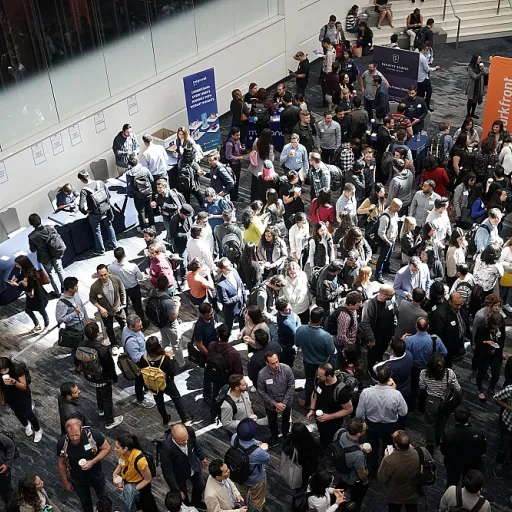
Defining human resources and talent advisor roles
Clarifying the Distinct Functions in People Management
Understanding the difference between human resources and talent advisor roles is essential for organizations aiming to maximize employee engagement and drive long-term organizational strategy. Both roles contribute to the development and management of employees, but their focus and approach differ in meaningful ways.
Human resources professionals are typically responsible for a broad range of resource management activities. Their core functions include recruitment, employee relations, compliance, payroll, and supporting the overall employee lifecycle. HR teams ensure that company policies are followed and that the organization remains compliant with labor laws. They also play a crucial role in employee engagement, resource management, and maintaining a paper free environment by implementing digital solutions for documentation and processes.
On the other hand, talent advisors focus more strategically on talent management and talent acquisition. Their primary goal is to identify, attract, and retain top talent, ensuring the organization has the skills competencies required for future growth. Talent advisors work closely with management to align recruitment processes with the company’s long-term objectives. They are often involved in advising on employee development programs, succession planning, and identifying high potential employees who can drive organizational success.
- Human resources: Broad resource management, compliance, employee relations, and administrative support.
- Talent advisors: Strategic talent management, recruitment process optimization, and employee development focused on organizational growth.
Both roles are vital for organizations looking to unlock employee potential and foster a culture of continuous development. For those interested in exploring related career paths, including advisory and mediation roles, you can find more insights in this comprehensive guide to ombudsman roles.
How communication styles differ between the two roles
Distinct Approaches to Communication in HR and Talent Advisory
Communication is at the heart of both human resources and talent advisor roles, but the way each approaches it can be quite different. Understanding these distinctions is essential for organizations aiming to maximize employee engagement and drive long-term growth.
- Human resources professionals often focus on clear, consistent messaging that supports company policies, resource management, and compliance. Their communication style is typically structured, aiming to ensure all employees understand organizational guidelines, benefits, and procedures. This helps maintain a paper free environment and streamlines the recruitment process.
- Talent advisors, on the other hand, use a more consultative and strategic communication style. They engage directly with management and potential employees to identify high potential talent and align recruitment strategies with organizational goals. Their conversations are often tailored, focusing on individual skills competencies, employee development, and how to attract top talent for the company.
While both roles require strong interpersonal skills, the human resources role is more about resource management and employee relations, ensuring that policies are understood and followed. Talent advisors prioritize understanding the aspirations of employees and the strategic needs of the organization, acting as advisors to both management and staff.
For those interested in how professional development and communication intersect within organizations, you can explore more in this insightful article on the role of business conferences in professional development.
Ultimately, the communication styles in these roles reflect their core objectives: human resources ensures organizational consistency and compliance, while talent advisors drive talent management and employee engagement through strategic, personalized interactions.
Strategic impact on organizational growth
Driving Organizational Growth Through Strategic Communication
When examining the strategic impact of human resources and talent advisor roles on organizational growth, it’s essential to understand how each contributes to the company’s long-term success. Both roles are pivotal in shaping the organization’s direction, but their approaches and focus areas differ.
- Human resources professionals are often the backbone of resource management, ensuring that employee relations, compliance, and employee engagement align with the company’s overall strategy. Their communication is typically structured, focusing on policies, employee development, and maintaining a positive workplace culture.
- Talent advisors, on the other hand, are more involved in talent management and talent acquisition. They work closely with management to identify high potential employees, streamline the recruitment process, and advise on skills competencies needed for future growth. Their communication style is consultative, aiming to unlock employee potential and drive organizational strategy forward.
Strategic communication from both roles supports the organization in different but complementary ways. Human resources ensure that the foundation is strong, while talent advisors push for innovation and adaptability by focusing on top talent and succession planning. This dual approach helps organizations remain competitive and agile in a changing business environment.
For organizations seeking to maximize the impact of their people strategy, understanding the essence of job orientation is crucial. It sets the stage for effective employee integration and long-term engagement. For more insights, visit this article on job orientation.
Ultimately, the strategic impact of these roles lies in their ability to align employee goals with organizational objectives, foster a culture of continuous development, and ensure the company is prepared to meet future challenges.
Key skills required for success in each position
Essential Competencies for Human Resources and Talent Advisors
Success in human resources and talent advisor roles depends on a unique blend of skills and competencies. While both positions contribute to the organization’s growth and employee engagement, the required expertise often differs based on the focus of each role.
- Human Resources: Professionals in this area need strong resource management abilities, a deep understanding of employee relations, and a solid grasp of organizational strategy. They must be adept at handling recruitment processes, managing employee development programs, and ensuring compliance with company policies. Communication skills are vital for building trust and resolving conflicts within the organization.
- Talent Advisors: These advisors focus on identifying, attracting, and nurturing top talent. Their role requires advanced skills in talent acquisition, talent management, and understanding high potential employees. They must be able to assess skills competencies, advise on employee engagement strategies, and support long term organizational development. Strategic thinking and the ability to align talent advisory with business objectives are crucial.
Both roles demand adaptability, empathy, and a commitment to continuous learning. As organizations move towards paper free processes and digital solutions, proficiency with HR technology and data-driven decision making is increasingly important. Whether working in human resources or as talent advisors, professionals must be able to foster a culture of growth and support the development of potential employees across the company.
| Role | Key Skills | Strategic Focus |
|---|---|---|
| Human Resources | Resource management, employee relations, recruitment, compliance, communication | Organizational stability, employee engagement, policy development |
| Talent Advisors | Talent acquisition, talent management, skills assessment, strategic advisory, engagement | Identifying top talent, supporting high potential, long term growth |
Understanding these distinctions helps organizations assign the right professionals to each role, ensuring both immediate and long term success in talent and resource management.
Challenges faced in human resources communication
Barriers to Clear Communication in Resource Management
In the world of human resources and talent advisory, communication is at the heart of every successful organization. Yet, several challenges can disrupt the flow of information between management, advisors, and employees. These obstacles can impact employee engagement, recruitment, and even the development of high potential talent.- Complex Organizational Structures: Large organizations often have layered management and resource management systems. This can make it difficult for messages to reach all employees clearly and quickly.
- Misalignment of Goals: Human resources teams may focus on compliance and policy, while talent advisors prioritize strategic talent acquisition and employee development. When these roles are not aligned, communication about organizational strategy and recruitment process can become fragmented.
- Information Overload: Employees and managers are often bombarded with emails, memos, and digital notifications. Important messages about skills competencies, employee relations, or talent management can get lost in the noise, reducing their impact.
- Lack of Understanding: Not all employees or managers fully understand the distinct roles of human resources and talent advisors. This can lead to confusion about who to approach for specific issues related to employee engagement, resource management, or talent advisory.
- Resistance to Change: Introducing new communication tools, such as paper free systems, or updating the recruitment process can meet resistance from employees used to traditional methods. This slows down the adoption of more efficient practices.
Addressing Communication Gaps for Organizational Growth
To overcome these challenges, organizations need to foster a culture of open and transparent communication. Encouraging regular feedback, clarifying the responsibilities of each role, and investing in employee development are essential steps. By focusing on clear communication, companies can better identify top talent, improve employee relations, and support long term organizational growth. This approach not only enhances the recruitment process but also ensures that the potential of every employee is recognized and nurtured.Best practices for effective communication in both roles
Building Trust and Clarity in Communication
Effective communication in both human resources and talent advisory roles is essential for fostering employee engagement and supporting organizational strategy. Whether working in resource management or talent management, professionals must prioritize transparency and clarity to build trust with employees and management alike. Clear communication helps employees understand company goals, their own role, and the opportunities available for development and growth.
Tailoring Messages for Different Audiences
Understanding your audience is key. Human resources teams often address broad organizational topics, such as policy changes or recruitment process updates, while talent advisors focus on high potential employees, skills competencies, and talent acquisition. Adapting your communication style and content to fit the needs of each group ensures messages are relevant and actionable. For example, when discussing employee development, HR may provide company-wide updates, while talent advisors offer personalized guidance to top talent.
Leveraging Technology for Efficiency
Modern organizations are moving towards paper free communication channels. Using digital platforms for resource management, recruitment, and employee relations streamlines processes and keeps information accessible. Tools that support document sharing, feedback collection, and real-time updates help both human resources and talent advisors maintain consistent communication throughout the recruitment process and employee lifecycle.
Encouraging Two-Way Dialogue
Open communication is not just about delivering information; it’s about listening. Encouraging feedback from employees and advisors allows organizations to identify challenges, improve engagement, and unlock employee potential. Regular check-ins, surveys, and open forums create opportunities for employees to share their perspectives, which can inform strategic decisions and enhance organizational growth.
Continuous Skills Development
Both roles require ongoing development of communication skills. Staying updated on best practices in employee relations, talent advisory, and organizational communication ensures that messages remain effective and aligned with company objectives. Training sessions, workshops, and white paper downloads can support professionals in refining their approach and adapting to evolving organizational needs.
- Be clear and concise in all communications
- Adapt your message to your audience, whether employees, management, or advisors
- Utilize digital tools for efficient, paper free communication
- Promote two-way dialogue to enhance engagement and understanding
- Invest in continuous learning to strengthen communication skills and support long term organizational success












